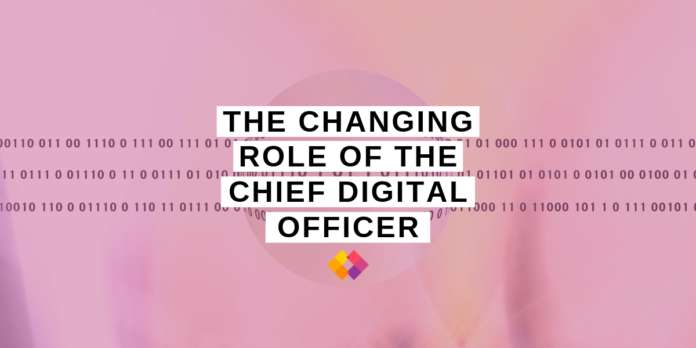The transformation of the Chief Information Officer (CIO) from a technology specialist to a business strategist has likely occurred at a faster pace than any other change in a C-level position. The term “digital” entered the corporate language with the start of the twenty-first century. Thus, the term chief digital officer (CDO) has started to surface. There were fewer than a dozen CDOs in the world throughout the first ten years of the new millennium. As of 2010, there were about fifty of these executives in the world. According to 2017 PwC research, over 19% of the world’s leading corporations have a CDO position, and of them, over 60% have been hired since 2015. The CDO function is firmly established as a crucial executive position that is anticipated to spearhead the shift to digital, with firms of all stripes now seeking to go digital.
CIO and CDO: synonym or subset?
When it comes to business objectives, the CDO job is more invested than the CIO role, which primarily addresses technical issues.
Creating an information asset and constructing the framework of the information system are the primary responsibilities of the CIO position. CIOs are responsible for overseeing the acquisition and best application of new IT tools and technology. In addition to overseeing hardware, CIOs are in charge of internal IT service management. In addition to managing IT infrastructure, the position was supposed to employ technology to further business objectives. The CIO has to be able to incorporate technology into business solutions at the start of the twenty-first century, with a particular emphasis on the beginning of the web-based era of business. Over the past few decades, older technology has become outdated at an equally remarkable rate, and this has been reflected in the fast changes in the tasks and responsibilities of the CIO.
However, the primary responsibility of the CDO is to make the organization AI-ready and to manage and produce value from this information and data asset through decision support. Leading the organization’s business transformation across departments and functions is the responsibility of the CDO position. According to the 2018 Harvey Nash/KPMG CIO Survey, more than 40% of companies with a CDO have a well-defined enterprise-wide digital strategy. However, the same survey came to the conclusion that “the most successful companies employ both CIOs and Chief Digital Officers (CDOs) who work in tandem to take advantage of innovative technology.”
This suggests that it is impossible to wish away the hyphenated relationship between the CIO and CDO jobs. These two positions continue to support one another and strive to make the most of technology. IT technology acceptance, functionality, and strong execution all closely correlate with the success of digital efforts. One way to characterize the distinction between the CIO and CDO functions is that the former is primarily an inward-looking technology function, while the latter is an outward-looking business function. However, both positions are crucial—one for managing change, the other for guaranteeing continuity.
Enter the Chief Information and Digital Officer
A growing number of firms are choosing to designate a Chief Information and Digital Officer (CIDO) in lieu of a CIO and a CDO. To put it simply, this position is in charge of both leading digital change as a CDO and “keeping the lights on” as a CIO. The duties and obligations of a CIDO can be broadly classified into three aspects, as this Forbes article explains:
- Growing the core business
- Transforming the core business
- Scaling new businesses
Competencies of a CIDO
- A CIDO position calls for a specific set of competencies. These are the top candidates among them, based on our expertise in matching our clients with the best CIDOs:
- The capacity to strike the ideal balance between technological prowess and business goals
- The mindset to assemble and enable a group capable of serving as change management agents
- A recognition of the significance of security concerns and the integration of cybersecurity measures into all endeavours
- An inclination to learn new things and try them out
- The ability to create and implement a revolutionary digital roadmap
Above and beyond these qualities, a CIDO must possess the persistence to force change ideas across the business, particularly the executive leadership. Not only is the capacity to influence senior leadership a crucial skill for a CIDO, but it is the most crucial one.
Measures of success
Without a doubt, given that every company wants to “go digital,” the CIDO position is a crucial CXO function in the modern era. However, because the essence of this function involves transformation, it can be challenging to establish clear criteria that can be used to gauge performance. It is now more than just a function of cost optimization. While not as readily and immediately quantifiable, “time to market,” customer centricity, productivity, quality improvement, and data insights that provide predictive and cognitive analysis are some measures that are good markers of success.
Certain organizations focus on more objective measures, such as the quantity of completed projects and pilots or the quantity of projects that achieve operational scale. Five essential measures were established by McKinsey last year to assess a business’s digital initiatives:
- Return on digital investments
- Percentage of the annual technology budget spent on digital initiatives
- Time to market for digital applications
- Percentage of executive incentives linked to digital
- Top technical talent was attracted, promoted, and retained.
The pecking order:
In the past, the CIO position was seen as both a cost center and a way to save costs. As a result, the majority of CIOs now report to the CFO. Conversely, the organization’s strategic portion is likewise owned by the CIDO. For this reason, reporting to the CEO would be a more logical structure. This would imply that rather than being restricted to financial measures alone, the deliverables are now more closely aligned with overarching corporate goals.
The Future of the CIDO role:
A year ago, Marriott International’s then-CIO made the decision to retire. A CIDO, not a new CIO, was named as the substitute. According to the press release, this was done to propel the business’s technological journey and facilitate its continued expansion. Leading both corporate objectives and technological transformations will be a responsibility for the CIDO of the future. As the most significant CXO role in all firms and a serious candidate to become CEO, we see this as a slow but steady evolution of the CIDO role.






